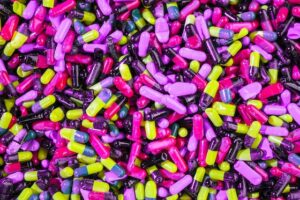How the Stainihard process improves the wear resistance of stainless steel

The natural finish on stainless steel may not suit all sites where it is placed, so some locations may choose complementary or coordinating colors for their site furnishings. Stainless steel can be finished with paint, powder coat, etc., and this coloring is one of the common motivations for coating stainless steel. It is crucial to pay attention to the wear resistance of stainless steel when choosing the coating to apply.
How do you improve the wear resistance of stainless steel?
A steel and chromium alloy known as stainless steel has an elevated level of stain, rust, and wear resistance. At least 10.5% chromium, 1.2% or less of carbon, and additional alloying elements are present in stainless steels. By including additional elements like nickel, molybdenum, titanium, niobium, manganese, etc., stainless steel’s wear resistance and mechanical qualities can be further improved. Depending on the chromium content, some types of stainless steel are more prone to corrosion than others. The likelihood of rusting in a metal decrease with increasing chromium concentration. Yet rust can and will form on stainless steel over time if it is not properly maintained. The primary reason stainless steel is utilized is that it can perform in moist conditions and is wear resistant.
Aisi 316(L) and Aisi 304 are the two most well-known and frequently used varieties of stainless steel. Yet other austenitic stainless-steel types are also widely utilized in the automotive, oil & gas, chemical, medical, and food industries due to their strong corrosion resistance. Stainless steels are frequently in use for many years before they may be recycled due to their strength and lifespan. An estimate of the average lifespan is 20 years. Chromium carbide, chromium carbide – nickel/chrome, tungsten carbide/chromium carbide – nickel, tungsten carbide – cobalt, and tungsten carbide – cobalt/chrome are some common varieties of wear resistance of stainless steel.
Aalberts Surface Technologies Eindhoven B.V. has a procedure called stainihard to address the low hardness, sensitivity, and low wear resistance of stainless steel. The stainless steel wear resistance, fatigue strength, and sensitivity are all significantly increased by this procedure. When machines need to be cleaned frequently, this has the advantage of not affecting the wear resistance of stainless steel used to manufacture the machine and, in some situations, improving it. stainihard guarantees that foods, such as milk products, stick less and may therefore be removed more simply and fast. Without this method, there would be restrictions on the use of high-quality mechanical applications in numerous machines and applications.
Some advantages of the stainihard process include:
- Elevated surface hardness
- Good dimensional stability
- Improves the wear resistance of stainless steel
- Corrosion protection
- Higher fatigue resistance
Reach out to Aalberts Surface Technologies to improve the wear resistance of stainless steel
The stainihard process is based on nitrocarburizing in gas, and the stainihard name is a distinctive trademark registered by Aalberts Surface Technologies. Using stainihard, the surface is enhanced with nitrogen and carbon to enhance a product’s mechanical qualities. The stainihard layer is an extended austenite (s-phase) zone, and strong compressive stresses occur in this zone, increasing the hardness and enhancing the tribological and fatigue properties, and it achieves all of this without negatively affecting the corrosion resistance. The type of stainless steel and surface conditions, among other factors, affect the hardening depth of stainihard. stainihard is successfully used across a wide range of industries and applications, improving the wear resistance of stainless steel. Visit their website at www.stainihard.com to make a purchase today!







